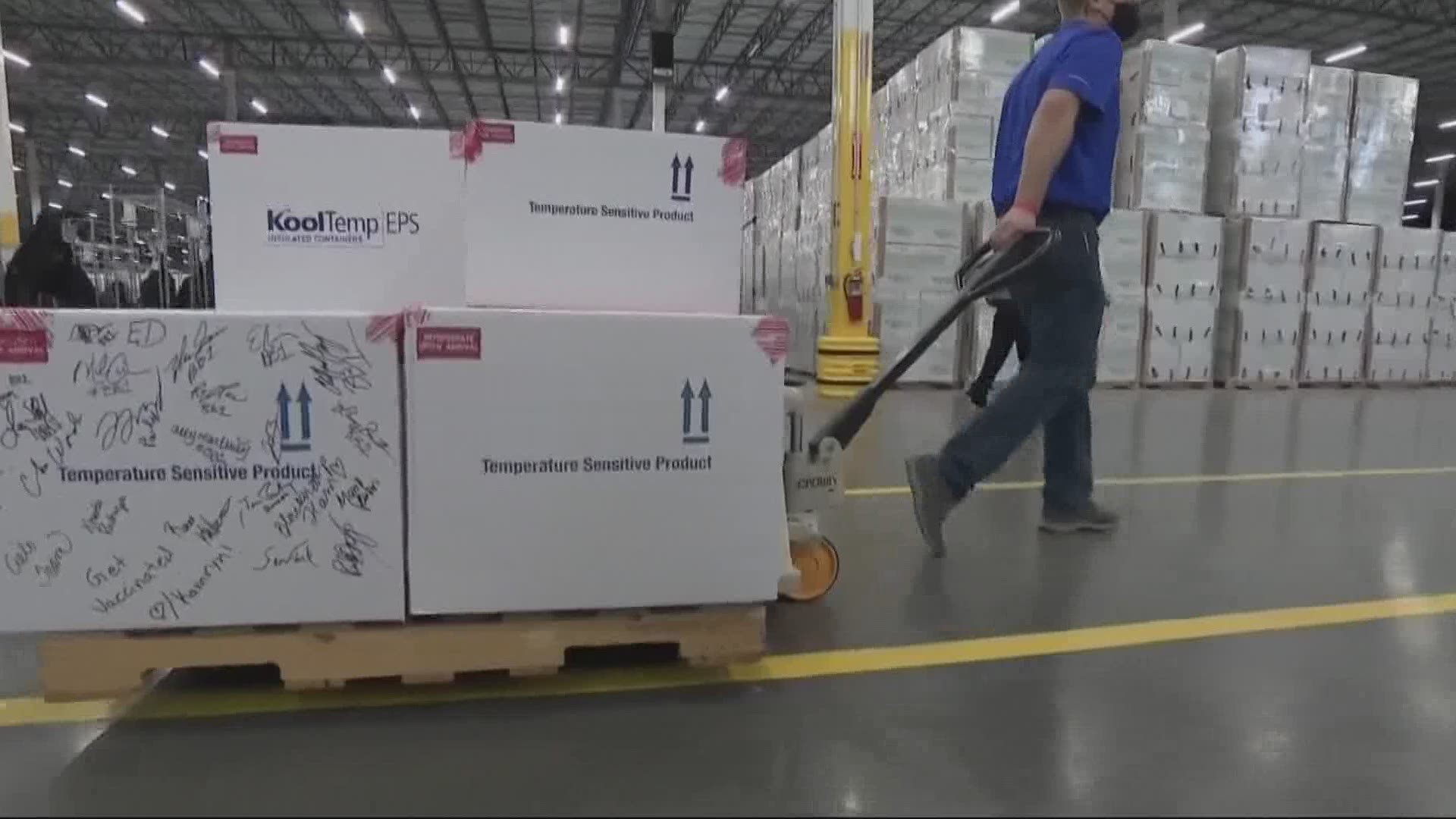PORTLAND, Ore. — Oregon officials say the state’s COVID-19 vaccine timeline could speed up dramatically thanks to President Biden’s announcement that the U.S. will have enough doses for all adults by the end of May. That’s two months earlier than planned. It's largely possible because of the newly approved Johnson & Johnson vaccine, which is already in production.
“If these vaccine deliveries really come to pass and it looks like we're able to vaccinate quicker, I don't think the governor would have any issues in moving forward,” said Oregon Health Authority (OHA) Chief Financial Officer Dave Baden.
Friday, before the president’s big reveal, OHA officials laid out the state’s long-awaited vaccine timeline. Among the key dates: Oregonians age 45 and older with underlying conditions would be eligible by March 29, and all Oregonians would be eligible by July 1. Officials also said they expected to be able to administer close to 200,000 doses a week by the end of March, up from the current rate of 120,000.
Baden says that timeline was already conservative, adding officials expected people to become eligible before those dates. Now, in light of President Biden’s announcement, that’s even more the case.
He said state officials are just waiting on details as to how many doses they can expect to receive from the feds. Those come three weeks in advance, he noted. At this point officials don’t have any larger shipments scheduled, so the soonest they could start seeing the results of the ramped up production is the end of March.
“The proof is in the pudding in getting these vaccines delivered to the state,” Baden said. “What we really wanted to set out [in our timeline] was reasonable expectations, and if we exceed them by being able to move dates forward, I hope every Oregonian would be happy.”
The other issue here is not just doses but infrastructure. Given that vaccine appointments are already hard to get, could Oregon handle administering that many more doses?
Baden said the state could, noting the appointment bottleneck hasn't been due to staff or space. It's been a shortage of doses from the feds.
New data from the Centers for Disease Control and Prevention show Oregon has administered 80% of the doses it's received. The data also show the state has now surpassed one million shots in arms.

